Temperature and Heat-Related Mortality Trends in the Sonoran and Mojave Desert Region
Abstract
:1. Introduction
2. Materials and Methods
3. Results and Discussion
3.1. Temperature Trends
3.2. The Health Effects of Heat Waves
3.2.1. Heat Waves and Mortality in the Study Area
Southwestern United States
Northwest Mexico
4. Conclusions
Acknowledgments
Author Contributions
Conflicts of Interest
References
- Xu, Z.; FitzGerald, G.; Guo, Y.; Jalaludin, B.; Tong, S. Impact of heatwave on mortality under different heatwave definitions: A Systematic review and meta-analysis. Environ. Int. 2016, 89–90, 193–293. [Google Scholar] [CrossRef] [PubMed]
- Madrigano, J.; Ito, K.; Johnson, S.; Kinney, P.; Matte, T. A case-only study of vulnerability to heat wave-related mortality in New York City (2000–2001). Environ. Health Perspect. 2015, 123, 672–678. [Google Scholar] [PubMed]
- Vanos, J.K.; Kalkstein, L.S.; Sanford, T.J. Detecting synoptic warming trends across the US Midwest and implications to human health and heat-related mortality. J. Climatol. 2014, 35, 85–96. [Google Scholar] [CrossRef]
- Habeeb, D.; Vaego, J.; Stone, B. Rising heat wave trends in large U.S. cities. Nat. Hazards 2015, 76, 1651–1665. [Google Scholar] [CrossRef]
- Martínez-Austria, P.; Bandala, E.; Patiño-Gómez, C. Temperature and heat wave trends in northwest Mexico. Phys. Chem. Earth 2015, 91, 20–26. [Google Scholar] [CrossRef]
- Caravante, E.R.D.; Luque, A.L.C.; Gallegos, P.A. Mortality for excesive natural heat in the northwest Mexico: Social conditions associated with the cause of death. Front. Norte 2014, 26, 52. [Google Scholar]
- Moreno-Rodriguez, V.; del Rio-Salas, R.; Adams, D.K.; Ochoa-Landin, L.; Zepeda, J.; Gomez-Alvarez, A.; Palafox-Reyes, J.; Meza-Figueroa, D. Historical Trends and sources of TSP in a Sonoran desert city: Can the North America Monsoon enhance dust emissions? Atmos. Environ. 2015, 110, 111–121. [Google Scholar] [CrossRef]
- Guirguis, K.; Gershunov, A.; Tardy, A.; Basu, R. The impact of recent heat waves on human health in California. J. Appl. Meteor. Climatol. 2014, 53, 3–19. [Google Scholar] [CrossRef]
- Drake, J.C.; Jennes, J.S.; Calvert, J.; Griffis-Keyle, K.L. Testing model for the prediction of isolated waters in Sonoran desert. J. Arid Environ. 2015, 118, 1–8. [Google Scholar] [CrossRef]
- Myint, S.W.; Zheng, B.; Talen, E.; Fran, C.; Kaplan, S.; Middel, A.; Smith, M.; Huang, H.; Brazel, A. Does the spatial arrangement of urban landscape matter? Examples of urban warming and cooling in Phoenix and Las Vegas. Ecosyst. Health Sust. 2015, 1, 1–5. [Google Scholar] [CrossRef]
- Jones, B.; O’neil, B.C.; McDaniel, L.; McGuinnis, S.; Mearns, L.O.; Tebaldi, C. Future population exposure to US heat extremes. Nat. Clim. Chang. 2015, 5, 652–655. [Google Scholar] [CrossRef]
- INE. Mexico third national communication to the United Nations Framework Convention on Climate Change; National Institute of Ecology, Ministry of Environment Resources: Insurgentes Cuicuilco, Mexico, 2007.
- Montero-Martínez, M.J.; Martínez-Jiménez, J.; Castillo-Perez, N.I.; Espinoza-Tamarindo, B.E. Escenarios Climáticos en México Proyectados Para el Siglo XXI: Precipitación y Temperaturas Máxima y Mínima. In Atlas de Vulnerabilidad Hídrica en México ante el Cambio Climático; Martínez-Austria, P.F., Patiño-Gómez, C., Eds.; Jiutepec, Morelos, Instituto Mexicano de Tecnología del Agua: Jiutepec, Mexico, 2010; pp. 10–39. [Google Scholar]
- Intergovernmental Panel on Climate Change. Intergovernmental Panel on Climate Change. Summary for Policymakers. In Climate Change 2013: The Physical Basis; Stocker, T.F., Ed.; Cambridge University Press: Cambrige, UK, 2013. [Google Scholar]
- Meehl, G.A.; Tebaldi, C. More intense, more frequent, and longer lasting heat waves in the 21st century. Sci. Rep. 2004, 305, 994–997. [Google Scholar] [CrossRef] [PubMed]
- Ganguly, R.; Steinhaeuser, K.; Erickson, D.J.; Branstetter, M.; Parish, E.S.; Singh, N.; Drake, J.B.; Buja, L. Higher trends but larger uncertainty and geographic variability in 21st century temperature and heat waves. Proc. Natl. Acad. Sci. USA 2009, 106, 15555–15559. [Google Scholar] [CrossRef] [PubMed]
- Randall, D.A.; Word, R.A. Climate Models and Their Evaluation. In IPCC, Climate 2007: Impacts, Adaptation and Vulnerability; Cambridge University Press: Cambridge, UK, 2007; pp. 589–662. [Google Scholar]
- WHO and WMO. Atlas of Health and Climate; WHO and WMO: Geneva, Switzerland, 2012. [Google Scholar]
- Intergovernmental Panel on Climate Change. Climate Change 2014: Synthesis Report. Contribution of Working Groups I, II and III to the Fifth Assessment Report of the Intergovernamental Panel on Climate Change; Intergovernmental Panel on Climate Change: Geneva, Switzerland, 2014; p. 151. [Google Scholar]
- Guha-Sapir, D.; Hoyois, P.; Below, R. Annual Disaster Statistical Review 2013. The Numbers and Trends; Centre for Research on the Epidemiology of Disasters: Brussels, Belgium, 2014. [Google Scholar]
- United Nations. Global Sustainable Development Report 2016; Departament of Economic and Social Affairs: New York, NY, USA, 2016. [Google Scholar]
- CLICOM. Base de datos Climatológica Nacional. Servicio Meteorológico Nacional & Centro de Investigación Científica y de Eduación Superior de Ensenada. Available online: http://clicom-mex.cicese.mx/ (accessed on 22 June 2016).
- McCabe, G.J.; Wolock, D.M. Climate change and the detection of trends in annual runoff. Clim. Res. 1997, 8, 129–134. [Google Scholar] [CrossRef]
- Santos, J.; Leite, S. Long-term variability of temperature time series recorded in Lisbon. J. Appl. Stat. 2009, 36, 323–337. [Google Scholar] [CrossRef]
- Yaseen, M.; Rientjes, T.; Nabi, G.; Rehman, H.U.; Latif, M. Assessment of recent temperature trends in Mangla watershed. J. Himal. Earth Sci. 2014, 47, 107–121. [Google Scholar]
- He, Y.-L.; Zhang, Y.-P.; Wu, Z.-J. Analysis of climate variability in the Jinsha river valley. J. Trop. Meteorol. 2016, 22, 243–251. [Google Scholar]
- The Centre for Australian Weather and Climate Research. Defining Heatwaves: Heatwave Defined as a Heat-Impact Event Servicing All Community and Business Sectors in Australia; Bureau of Meteorology, Australian Government: Melbourne, Australia, 2013.
- Robinson, P.J. On the definition of a heat wave. J. Appl. Meteorol. 2001, 40, 762–774. [Google Scholar] [CrossRef]
- Li, G. U.S. Heatwave Analysis. Exploring Different Paramaeters to Classify Extreme Heat Events; National Oceanic and Atmospheric Administration: Washington, DC, USA, 2016.
- Met Office. Met Office Heat-health Watch. Met Office United Kingdom, 2016. Available online: http://www.metoffice.gov.uk/public/weather/heat-health/#?tab=heatHealth (accessed on 18 August 2016).
- National Oceanic and Atmospheric Administration. The Heat Index Equation. NOAA Weather Prediction Center. Available online: http://www.wpc.ncep.noaa.gov/html/heatindex_equation.shtml (accessed on 15 December 2016).
- Kent, S.T.; McClour, L.A.; Zaitchik, B.F.; Smith, T.T.; Gohlke, J.M. Heath waves and health outcomes in Alabama (USA); The importance of heat wave definition. Environ. Health Perspect. 2104, 122, 151–158. [Google Scholar]
- Anderson, G.B.; Bell, M.L. Heat waves in the United States; Mortality risk during heat waves and effect modification by heat waves characteristics in 43 U.S. Communities. Environ. Health Perspect. 2011, 119, 210–218. [Google Scholar] [CrossRef] [PubMed]
- Matías-Ramírez, L.G. Actualización del Indice de Riesgo por Ondas de Calor en México (Mexico’s Heat Waves Risk Index Actualization); Centro Nacional de Prevención de Desastres: Pedregal de Santo Domingo, Mexico, 2014. [Google Scholar]
- Intergovernmental Panel on Climate Change. Managing the Risks of Extreme Events and Disasters to Advance Climate Change Adaptation; Field, C., Barros, V., Stocker, T.F., Dahe, Q., Eds.; Cambdrige Univeristy Press: Cambdrige, UK, 2012. [Google Scholar]
- Degu, M.; Hossain, F.; Nigoyi, D.; Sr, R.P.; Shepered, M.J.; Voisin, N.; Chronis, T. The influence of large dams on surrounding climate and precipitation patterns. Geophys. Res. Lett. 2011, 38, L04405. [Google Scholar] [CrossRef]
- Hossain, F.; Jeyachandran, I.; Pielke, R. Have large dams altered extreme precipitation patterns? EOS 2009, 90, 453–454. [Google Scholar] [CrossRef]
- Bulut, H.; Yesilata, B.; Yesilnacar, M.I. Trend analysis for examining the interaction between the Atatürk Dam Lake and its local climate. Int. J. Nat. Eng. Sci. 2008, 2, 115–123. [Google Scholar]
- Bureau of Public Health Statistics Arizona. Trends in Morbidity and Mortality from Exposure to Excessive Natural Heat in Arizona. 2012 report; Arizona Department of Health Services: Phoenix, AZ, USA, 2013.
- Mrela, C.; Torres, C. Deaths from Exposure to excessive Natural Heat Occurring in Arizona, 1992–2009; Arizona Department of Health Services: Phoenix, AZ, USA, 2010.
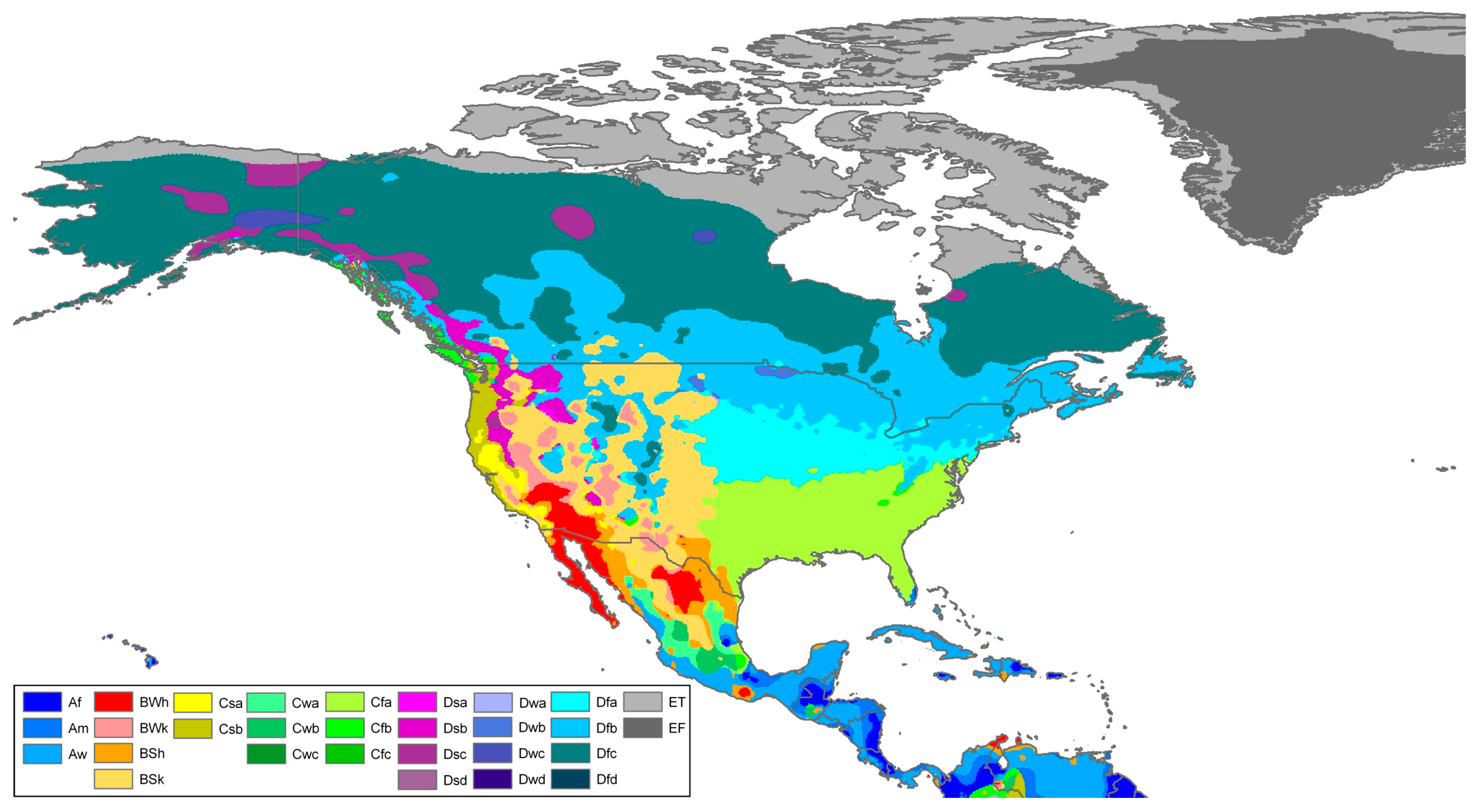
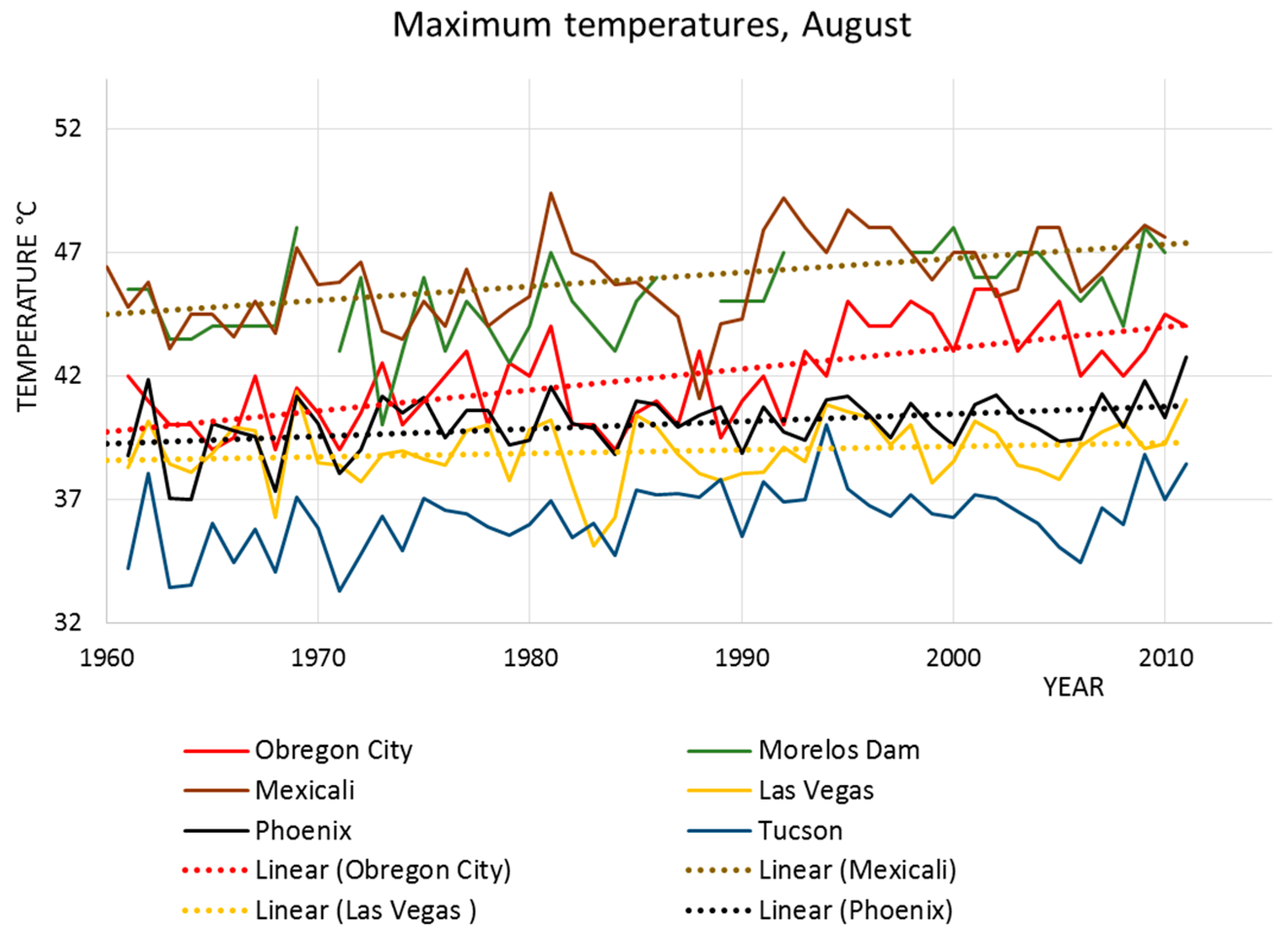
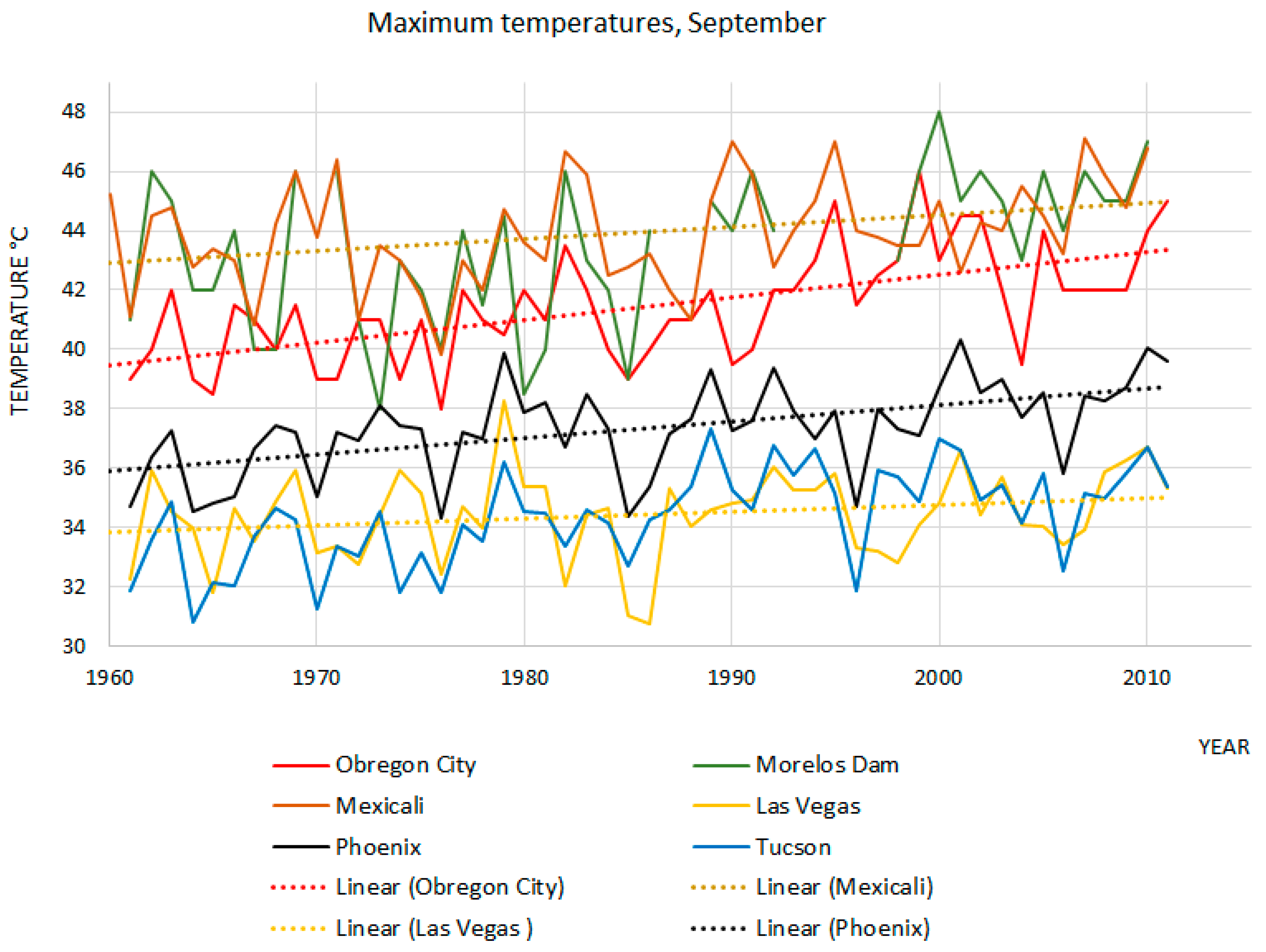
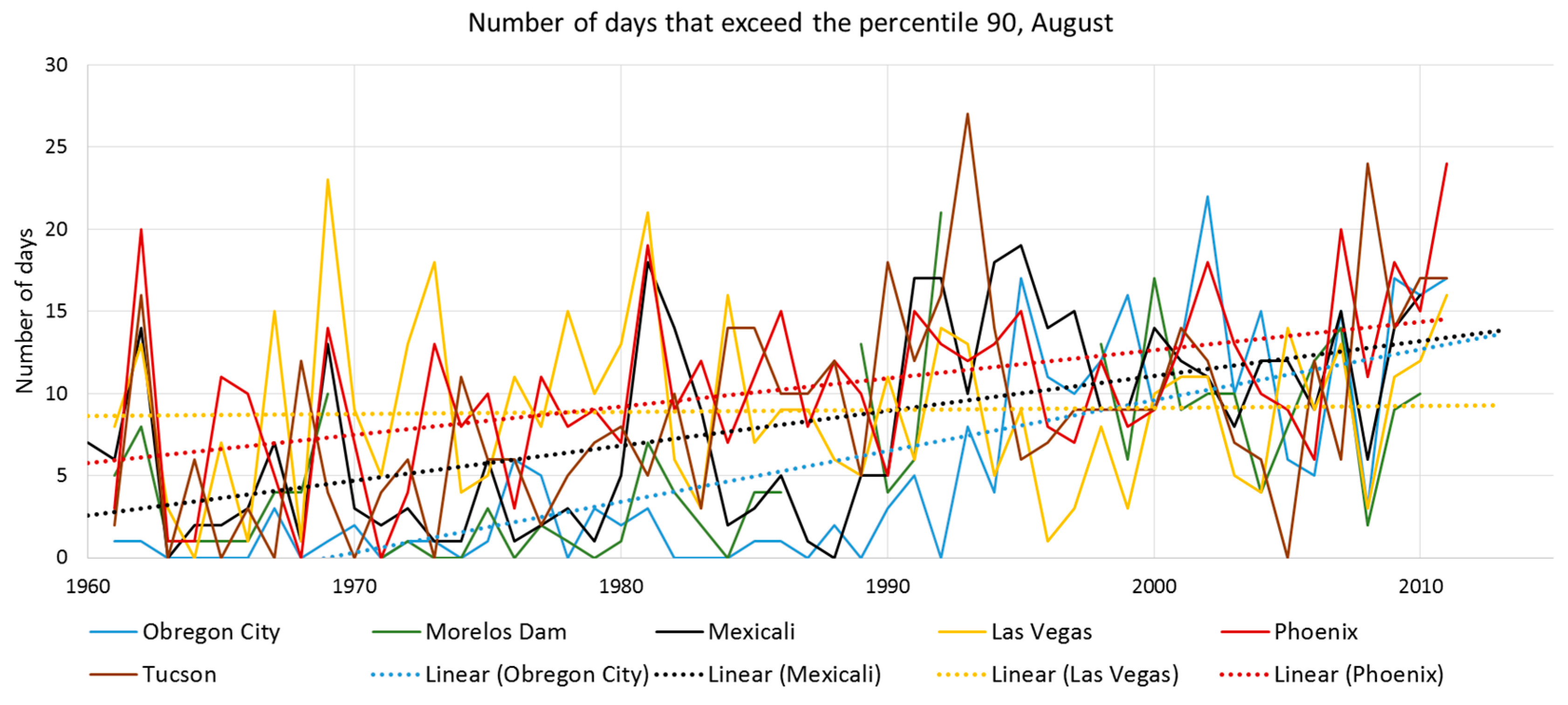
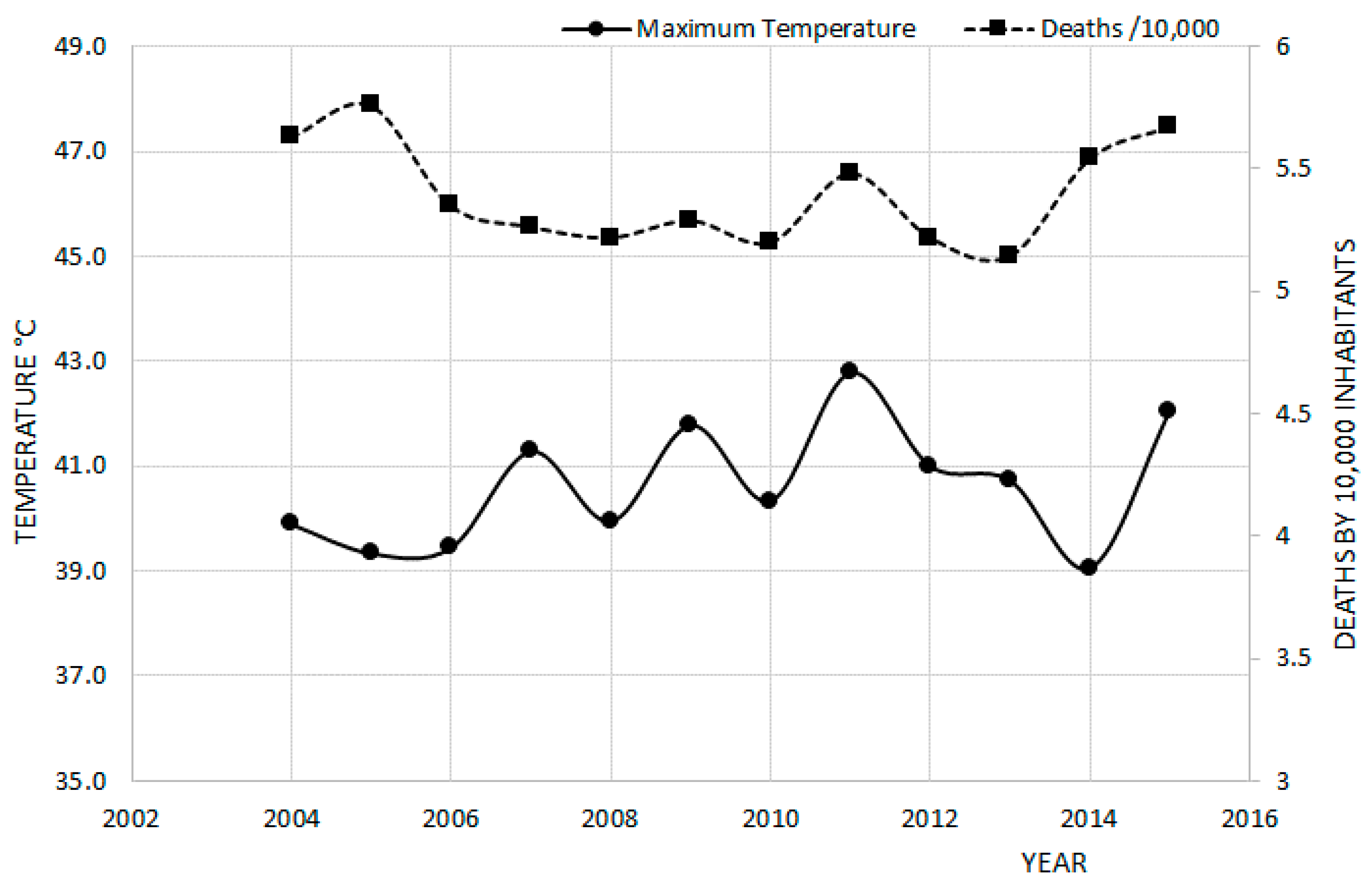
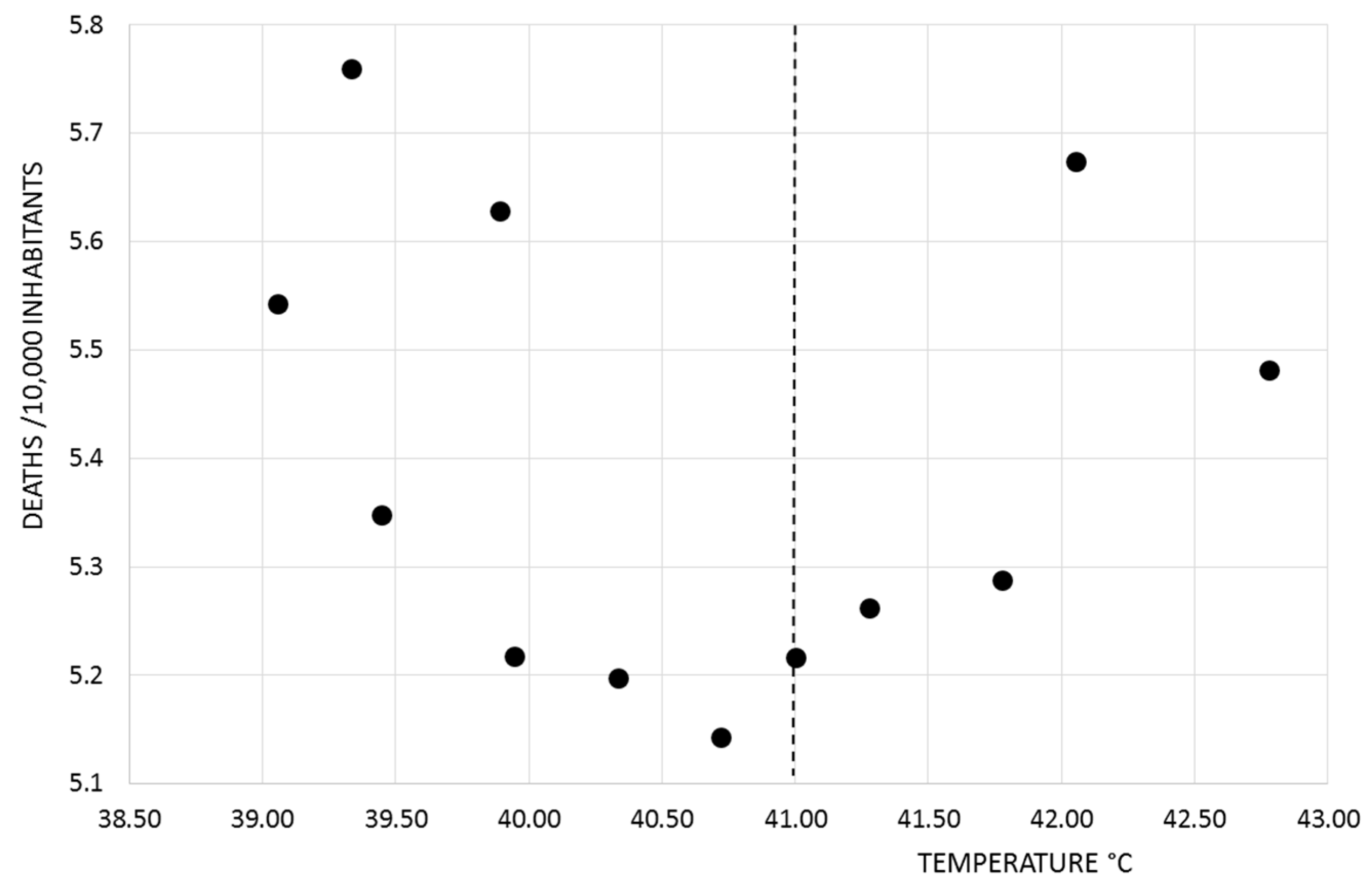
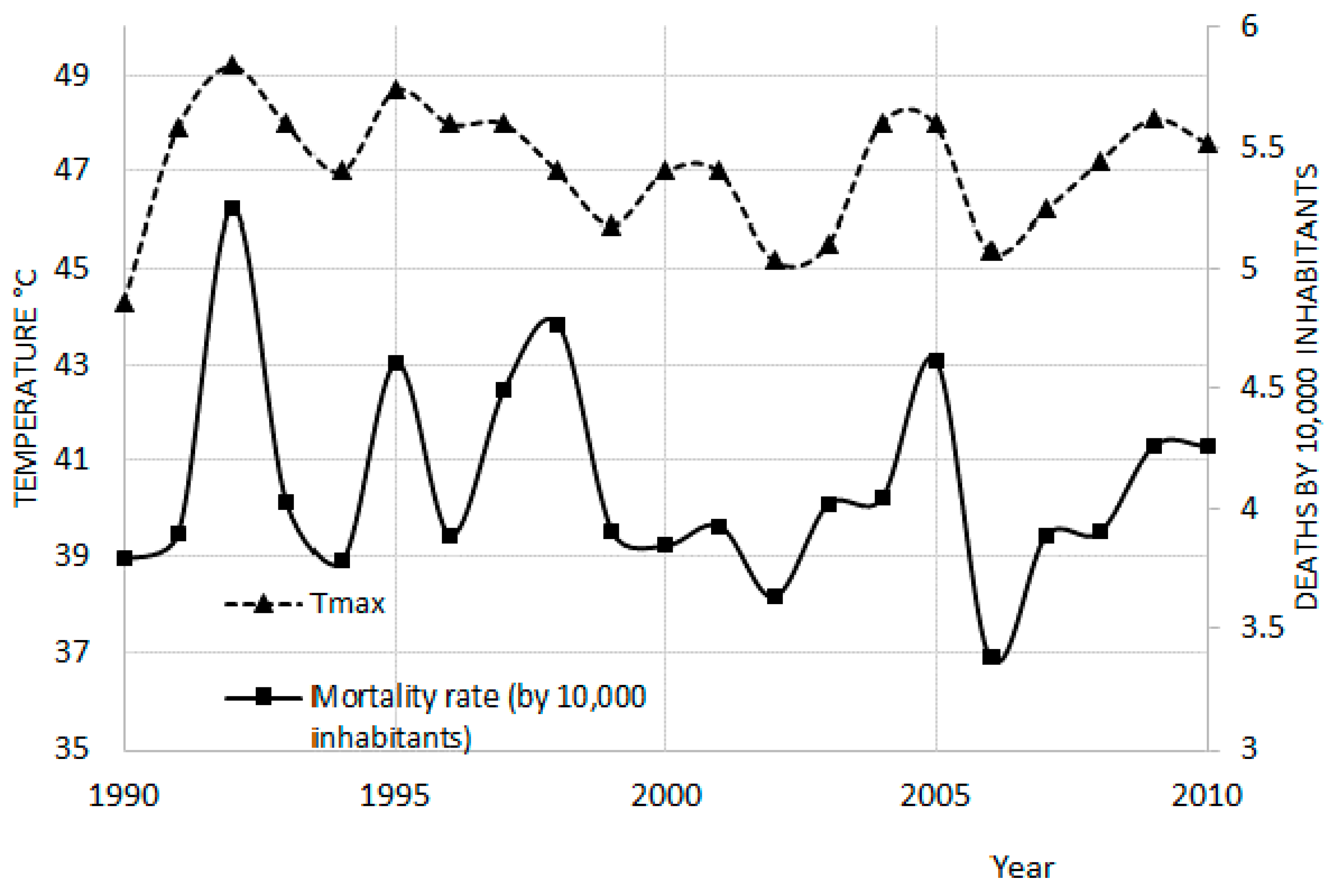
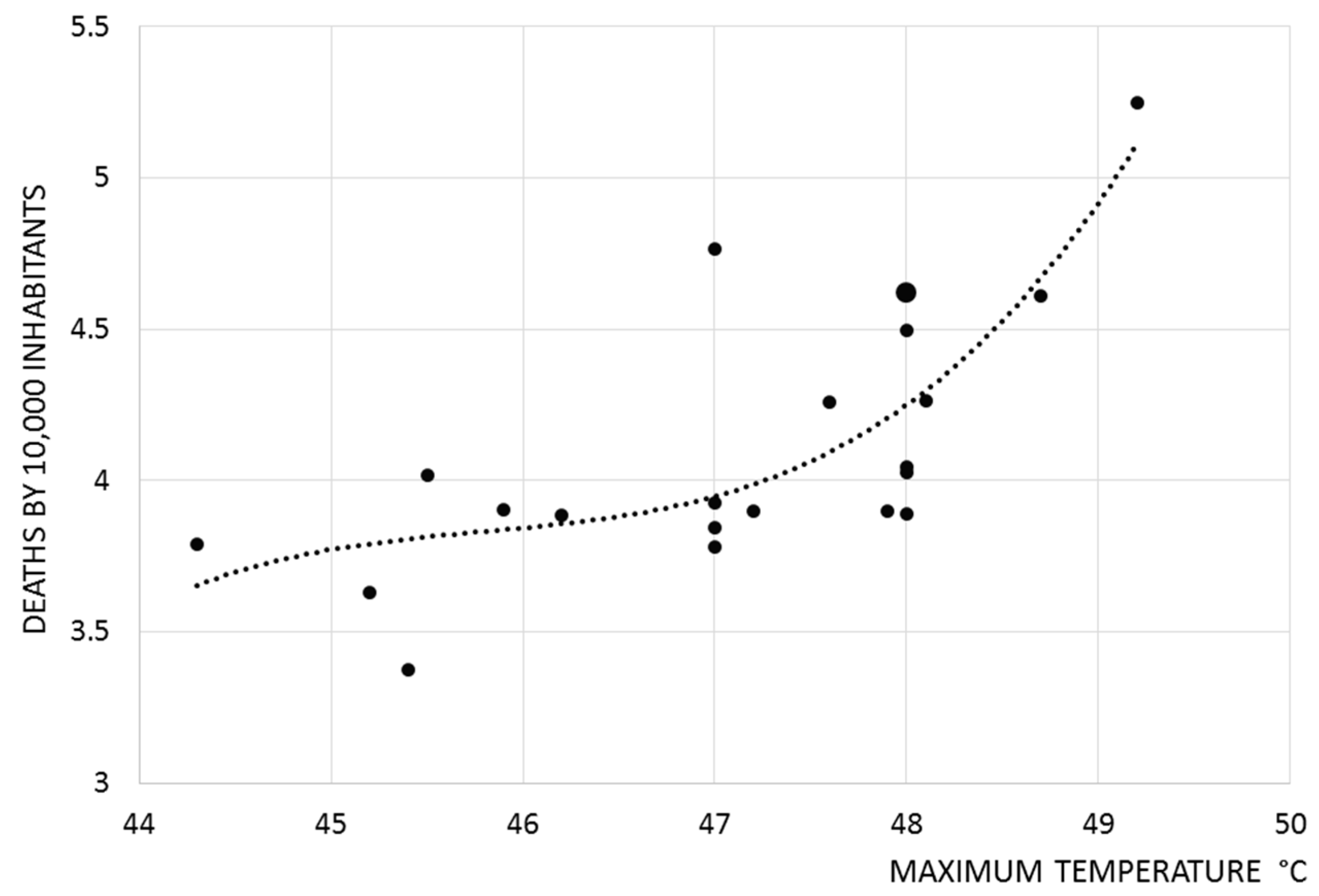
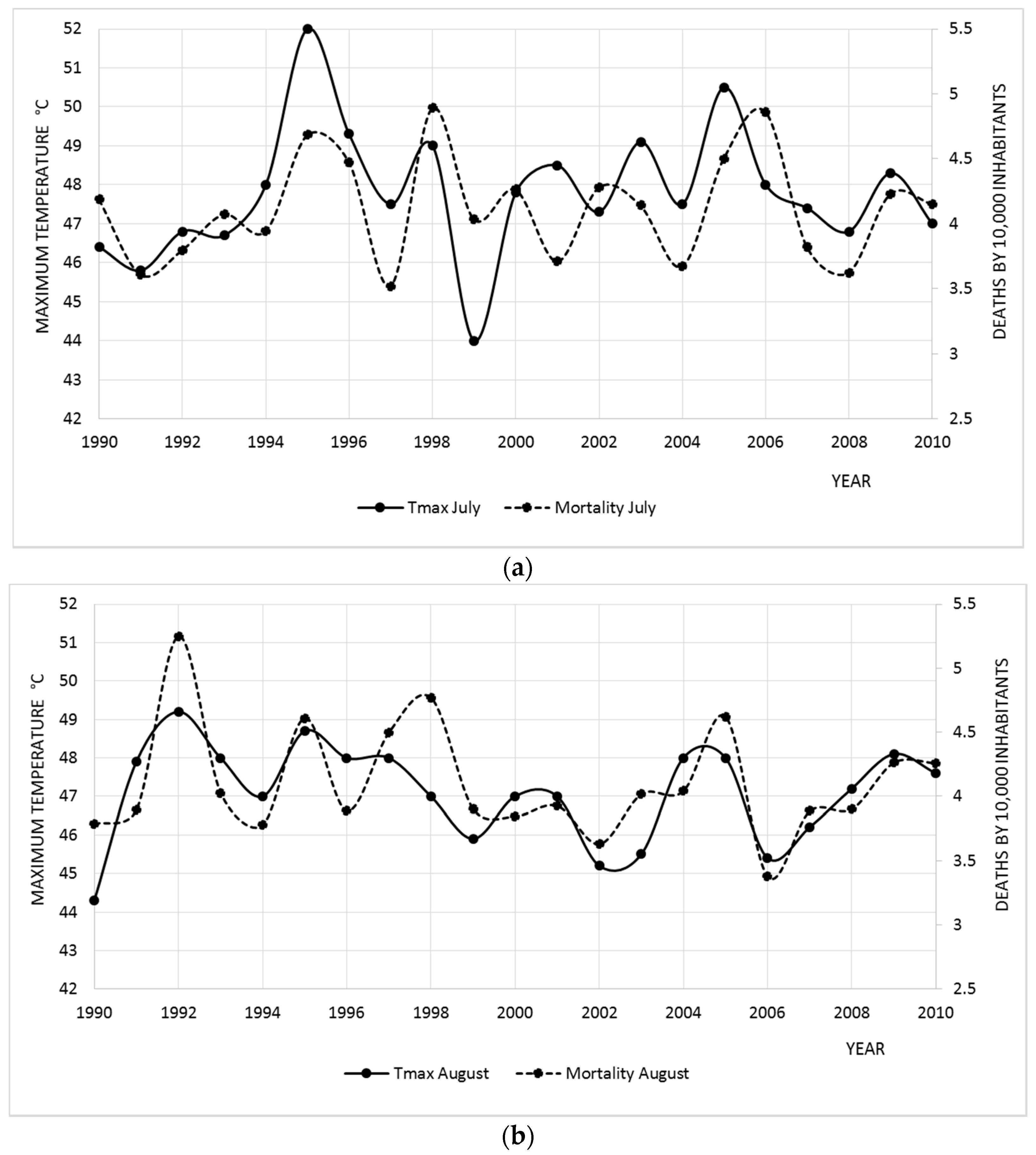
| City | Maximum Temperatures | Average Temperatures | ||||
|---|---|---|---|---|---|---|
| ZSR | t(n − 2, 1 − (α/2)) | Trend | ZSR | t(n − 2, 1 − (α/2)) | Trend | |
| Obregon City | 5.877 | 2.001 | Increase | 3.50 | 2.009 | Decrease |
| Morelos Dam | 5.284 | 2.018 | Increase | 0.906 | 2.018 | No trend |
| Mexicali | 4.809 | 2.009 | Increase | 2.294 | 2.009 | Decrease |
| Las Vegas | 1.088 | 2.009 | No trend | 4.793 | 2.009 | Increase |
| Phoenix | 2.721 | 2.009 | Increase | 6.211 | 2.009 | Increase |
| Tucson | 3.390 | 2.009 | Increase | 3.407 | 2.009 | Increase |
| City | Maximum Temperatures | Average Temperatures | ||||
|---|---|---|---|---|---|---|
| ZSR | t(n − 2, 1 − (α/2)) | Trend | ZSR | t(n − 2, 1 − (α/2)) | Trend | |
| Obregon City | 5.877 | 2.001 | Increase | 3.50 | 2.009 | Decrease |
| Morelos Dam | 5.284 | 2.018 | Increase | 0.786 | 2.018 | No trend |
| Mexicali | 4.809 | 2.009 | Increase | 1.101 | 2.009 | No trend |
| Las Vegas | 1.088 | 2.009 | No trend | 4.446 | 2.009 | Increase |
| Phoenix | 2.721 | 2.009 | Increase | 7.528 | 2.009 | Increase |
| Tucson | 3.390 | 2.009 | Increase | 4.04 | 2.009 | Increase |
© 2017 by the authors. Licensee MDPI, Basel, Switzerland. This article is an open access article distributed under the terms and conditions of the Creative Commons Attribution (CC BY) license ( http://creativecommons.org/licenses/by/4.0/).
Share and Cite
Martinez-Austria, P.F.; Bandala, E.R. Temperature and Heat-Related Mortality Trends in the Sonoran and Mojave Desert Region. Atmosphere 2017, 8, 53. https://doi.org/10.3390/atmos8030053
Martinez-Austria PF, Bandala ER. Temperature and Heat-Related Mortality Trends in the Sonoran and Mojave Desert Region. Atmosphere. 2017; 8(3):53. https://doi.org/10.3390/atmos8030053
Chicago/Turabian StyleMartinez-Austria, Polioptro F., and Erick R. Bandala. 2017. "Temperature and Heat-Related Mortality Trends in the Sonoran and Mojave Desert Region" Atmosphere 8, no. 3: 53. https://doi.org/10.3390/atmos8030053
APA StyleMartinez-Austria, P. F., & Bandala, E. R. (2017). Temperature and Heat-Related Mortality Trends in the Sonoran and Mojave Desert Region. Atmosphere, 8(3), 53. https://doi.org/10.3390/atmos8030053






